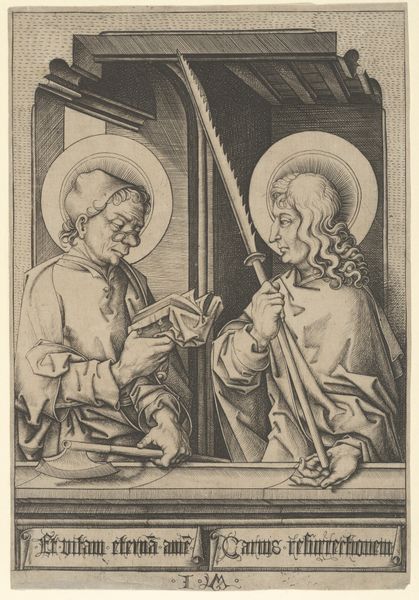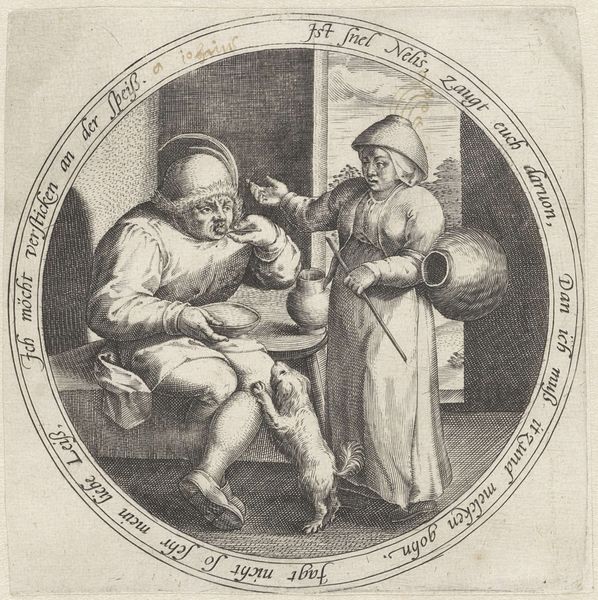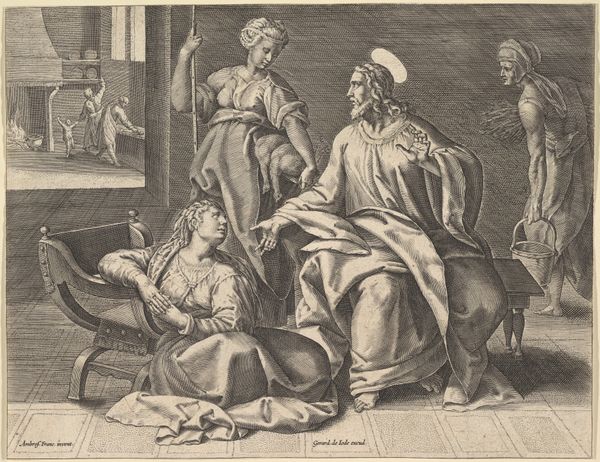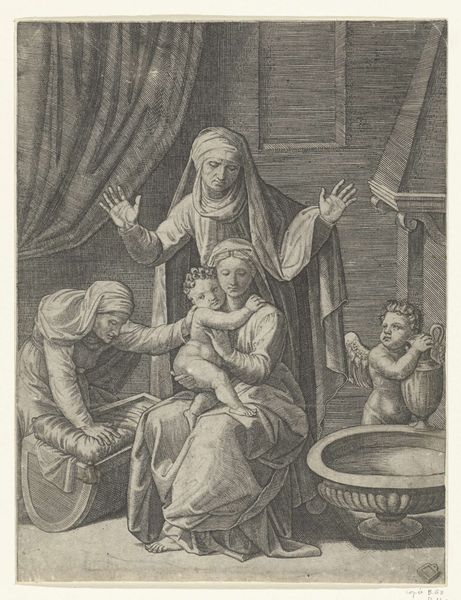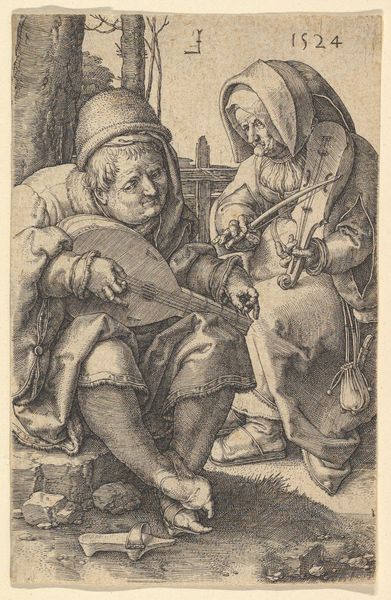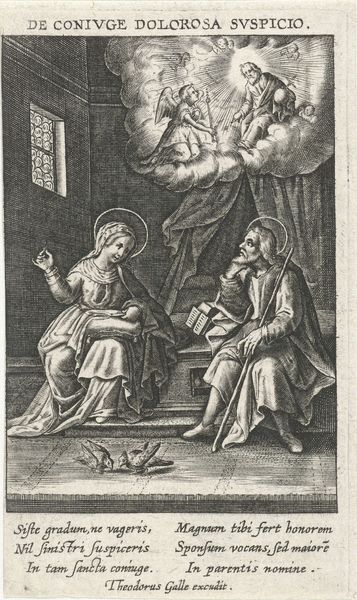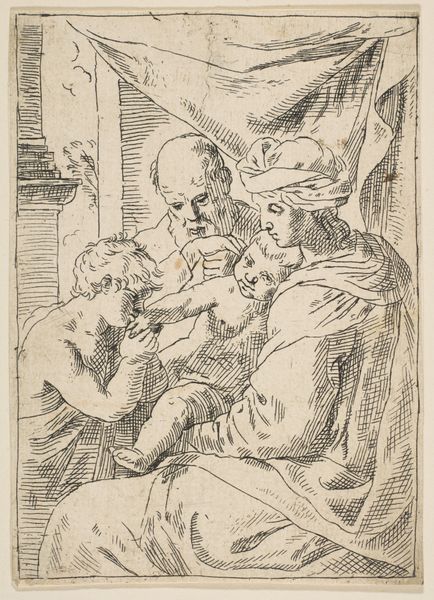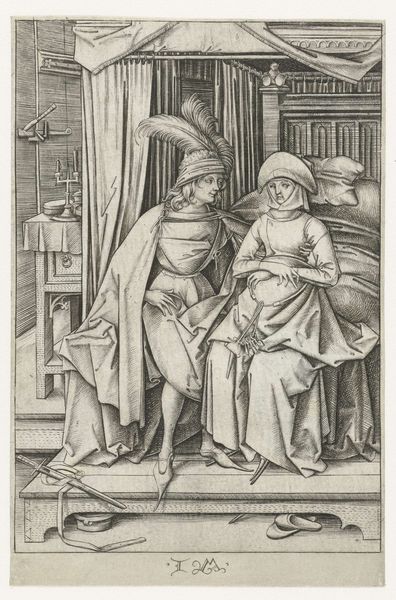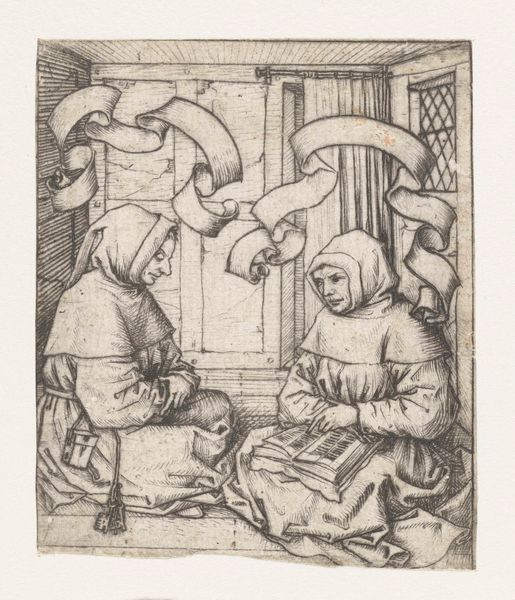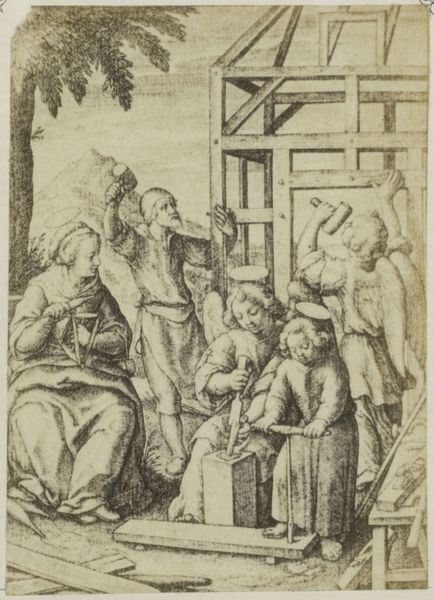
print, engraving
#
portrait
# print
#
figuration
#
history-painting
#
italian-renaissance
#
engraving
Dimensions: height 86 mm, width 51 mm
Copyright: Rijks Museum: Open Domain
Curator: This engraving, “Maria en kind en heilige Anna,” created by Marcantonio Raimondi sometime between 1500 and 1527, presents a rather tender figuration of Saint Anne, Mary, and the Christ Child. Editor: It's amazing to see this much detail achieved through engraving, such fine, meticulous lines! I'm struck by the weight of the robes, you can almost feel the heft of the fabric. It seems that materiality and reproduction were important here, in considering the labor required to make these marks multiplied across what must have been a fairly large number of prints for dissemination. Curator: Absolutely. Consider the symbology here: we have Saint Anne, often seen as representing faith and tradition, passing the child on to Mary. The passing of wisdom and lineage represented by touch. Notice how deliberately Anne touches Christ with gentle intention and clear dedication. Editor: I wonder, looking at the clothing, if the intent was verisimilitude? Or was it dictated more by convention? What sort of labor or craftsmanship would the fabrics portrayed in this image represent to a viewer at the time? Also, look at the sheer precision and expertise needed to create this tiny parallel hatching, a marvel of early printmaking! Curator: True, and don't overlook the setting. The classical architecture serves as a backdrop, emphasizing the connection between the Christian narrative and the classical world. The halos, although subtle, indicate the divine status of Mary and Jesus. Raimondi also made other engravings which served as popular imagery among a growing population of educated art collectors and average folks with walls to decorate and morals to reinforce. Editor: I find it striking how the artist has created a hierarchy through this seemingly simple distribution of light and shadow via very specific mark-making with their burin on copper, and by implication time devoted, skill achieved, and perhaps social access as well, while engaging this print. All in service to communicating very specific ideas and social roles, with Mary subtly positioned differently from Anna. Curator: A powerful statement on intergenerational faith, communicated using refined and skilled practice, deeply rooted in the religious sentiment and symbolism of the period. Editor: It makes me think about how printmaking democratized image distribution, yet at the same time reflected and reinforced social hierarchies through the choice of subject matter, the value of materials used, and the sheer mastery of labor manifest.
Comments
No comments
Be the first to comment and join the conversation on the ultimate creative platform.


